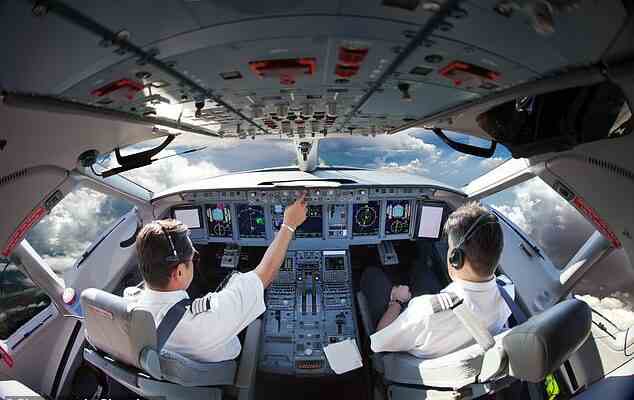While hundreds of thousands of people take flights every single day, there are still many questions surrounding the process.
Over the last couple of months, many flight crew members have gone viral on social media for answering burning travel questions – like why you have to keep window shades open during takeoff and landing, what the chime sound that you hear throughout flights really means, and what happens to the water when you flush the toilet on a plane.
Now, a set of pilots have addressed some more of the biggest flying mysteries to Newsweek, spilling the truth about what really goes on in the cockpit – as well as what happens if there’s an emergency mid-flight.
Pilots have spilled on the biggest travel mysteries to Newsweek, revealing the truth about what really goes on in the cockpit – and what happens if there’s an emergency (stock image)
They spoke out about the top secret set of code words and phrases that pilots use to alert the stewardesses about a problem without freaking out the passengers, as well as the harrowing process the flight attendants use to hide a body from fellow travelers if one passes away in air.
They even dished on the difference between a pilot and co-pilot and what they actually do all flight long, especially since 98 per cent of the time, the plane is on autopilot.
From who would take over if both of the pilots became ill or hurt during travel to why the wings wobbling during turbulence is actually a good thing – check out these six flying secrets revealed by pilots.
What is the difference between a pilot and co-pilot and what does each one do?

There is usually two pilots in a cockpit on every flight – a pilot, also known as a captain, and a co-pilot, also called a first officer. But what is the difference between the two? (Stock image)

Patrick Smith (seen), a pilot from Boston, told Newsweek that the co-pilot is definitely ‘not an apprentice’ to the pilot and that they are equally involved in the decision-making process
There is usually two pilots in a cockpit on every flight – a pilot, also known as a captain, and a co-pilot, also called a first officer.
And while both are fully qualified to work the aircraft, there are some differences between the two jobs.
Most notably, a pilot needs to have 2,500 hours of flying experience to earn the qualifications, while a co-pilot only needs 1,500.
Patrick Smith, a pilot from Boston, Massachusetts, who has written a book about his experiences, entitled Cockpit Confidential, told Newsweek that despite the difference, the co-pilot is definitely ‘not an apprentice’ to the pilot.
He noted that while the captain is ‘officially in charge,’ the first officer will usually average the same amount of take-offs and landings as captains do in ‘pretty much all weather conditions’ and are just as involved in the decision-making process during a flight.
‘It’s not terribly uncommon for the co-pilot to be older and more experienced than the captain. Pilots earn a larger paycheck, but both individuals fly the aircraft,’ he said.
He also explained that ‘seniority’ plays a huge role in a co-pilot being promoted to pilot.
‘Airline seniority bidding is a complicated thing,’ Smith continued. ‘A pilot can often have a more comfortable quality of life – salary, aircraft assignment, schedule, and choice of destinations.’
Indeed reported that co-pilots responsibilities include ‘preparing an aircraft and its cockpit before flights, maintaining records of navigation and events that occur during a flight, such as turbulence, communicating with the flight crew and the ground grew throughout each flight, updating airplane logs after each flight, reviewing the performance of an aircraft and keeping records of any important details, and taking over for the captain if an emergency situation arises.’
The outlet added that pilots are in control of ‘developing flight plans for each flight to ensure the plane has adequate fuel and is an appropriate weight, considering cargo and passengers, collaborating with meteorologists to evaluate the weather before a flight and adjust the flight plan as necessary, inspecting the different areas of an aircraft to ensure everything functions properly before boarding passengers, providing instructions to the co-pilot and cabin crew, and making announcements to passengers.’
What happens if both pilots get sick or hurt during a flight? Who will take over?

Having two pilots is vital in case one becomes debilitated – but what happens if both the captain and first officer both become ill or unable to fly the plane? (stock image)

Tony Shen (seen), a former pilot from Florida, explained to Newsweek that if something happens to both pilots, flight crew will look for passengers who have flying experience
Having two pilots is vital in case one becomes debilitated – but what happens if both the captain and first officer both become ill or unable to fly the plane?

Former pilot Dan Bubb (seen), from Las Vegas, Nevada, explained that it’s ‘extremely rare’ for that to happen, especially because the pilots take extreme measures to ensure they both don’t fall ill at the same time
Tony Shen, a former pilot who is now the president of Wayman Aviation Academy, from Florida, explained to Newsweek that if something happens to both pilots, flight crew will look for passengers who have flying experience.
‘No cabin crew members have been trained to either control the plane or communicate with [air traffic control],’ he revealed.
Former pilot Dan Bubb, from Las Vegas, Nevada, explained that it’s ‘extremely rare’ for that to happen, especially because the pilots take extreme measures to ensure they both don’t fall ill at the same time.
‘Pilots order different meals for that reason. Some pilots bring their own food they know is safe,’ he added.
‘And if the illness is severe and happens mid-flight, the pilots will declare an emergency and land at the nearest airport to be met by medical personnel.’
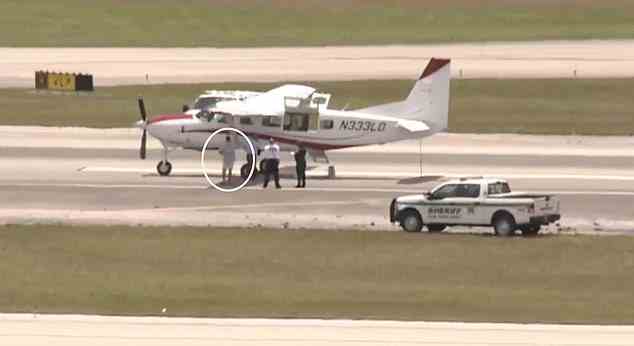
Back in May 2022, a passenger aboard a small private plane flying from The Bahamas to Florida was hailed a hero after he successfully landed the aircraft while air traffic control guided him

While the man, named Darren Harrison, 39, had never flown that type of plane before, he was an FAA-certified flight instructor with around 1,200 hours of flying time under his belt
Back in May 2022, a passenger aboard a small private plane flying from The Bahamas to Florida was hailed a hero after he successfully landed the aircraft while air traffic control guided him using a printed out picture of the cockpit controls.
While the man, named Darren Harrison, 39, had never flown that type of plane before, he was an FAA-certified flight instructor with around 1,200 hours of flying time under his belt.
The pilot had suffered a medical emergency and had fallen unconscious. Due to the plane’s small size, he was the only pilot on board.
Should you be alarmed if plane wings start to wobble during turbulence?
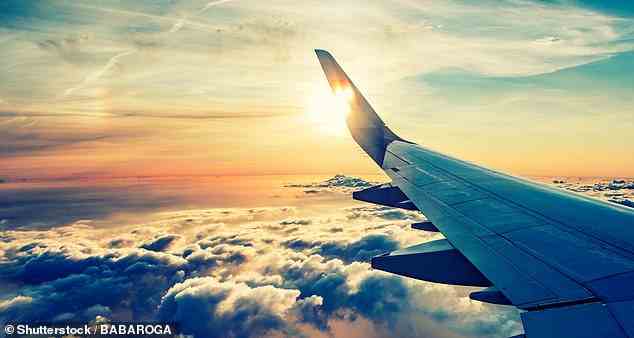
If you’ve ever been on an airplane that has gone through turbulence, you may have noticed the wings appearing to wobble – but is that something to be alarmed about? (Stock image)
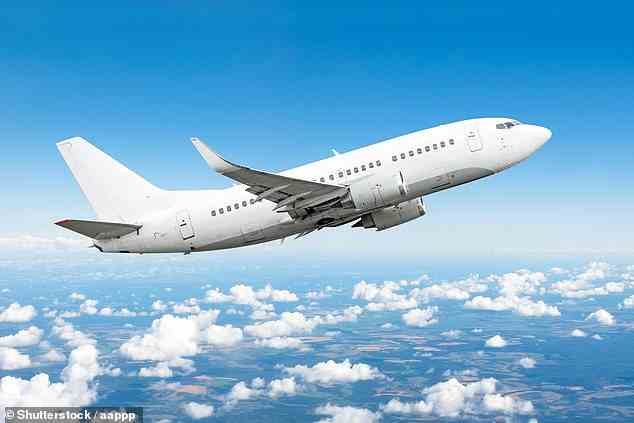
While it may look like they’re about to fall apart or that the plane is unsteady, Bubb said it’s actually nothing to worry about (stock image)
If you’ve ever been on an airplane that has gone through some turbulence, you may have noticed the wings appearing to wobble – but is that something to be alarmed about?
While it may look like they’re about to fall apart or that the plane is unsteady, Bubb said it’s actually nothing to worry about.

Shen (pictured) echoed these sentiments, adding that airplanes are structurally strong enough to handle any type of wind or weather you may encounter
In fact, according to the former pilot, wings flapping during turbulence is a ‘good thing.’
Shen echoed these sentiments, adding that airplanes are structurally strong enough to handle any type of wind or weather you may encounter.
‘The real danger during turbulence is that passengers can fly out the seat and get hurt if the seat belt is not fastened,’ he added.
‘So it is always recommended to keep your seat belt fastened during flight.’
CBS previously reported that the FDA requires all airplanes to be able to withstand turbulence up to 50 per cent stronger than the worst that’s ever been encountered before.
Mental Floss explained that the wings are actually designed to bend slightly to account for the slight changes in air density.
How much of your flight is actually spent in autopilot?

According to ThePointsGuy, airplanes are actually in autopilot for around 98 per cent of the time that they are airborne (stock image)

But Smith (pictured) told Newsweek that even so, flying is a very ‘hands-on operation and involves tremendous amounts of input from the crew’
According to ThePointsGuy, airplanes are actually in autopilot for around 98 per cent of the time that they are airborne.
But Smith told Newsweek that even so, flying is a very ‘hands-on operation and involves tremendous amounts of input from the crew.’
‘Our hands might not be steering the airplane directly, as would have been the case in the 1930s, but almost everything the airplane does is commanded, one way or the other, by the pilots,’ he added. ‘The automation only does what we tell it to do.’
He said pilots have to tell the autopilot ‘what to do, when to do it, and how to do it.’

‘Our hands might not be steering the airplane directly, but almost everything the airplane does is commanded, by the pilots,’ he added. ‘The automation only does what we tell it to do’
‘There are, for example, no fewer than six different ways that I can program an automatic climb or descent on the jet that I fly, depending on preference and circumstances,’ he continued.
‘We are telling it which routes to follow, and how to follow them, which speeds and altitudes to fly, and when to fly them, and 100 other things over the course of a flight.
‘You’d be surprised how busy a cockpit can become – to the point of task-saturation – even with the autopilot [mode] on.
‘The emphasis nowadays is on a different skill set, absolutely, but it’s wrong to say this skill set is somehow less important, or less demanding than the old one.’
What happens if a passenger dies during the flight?
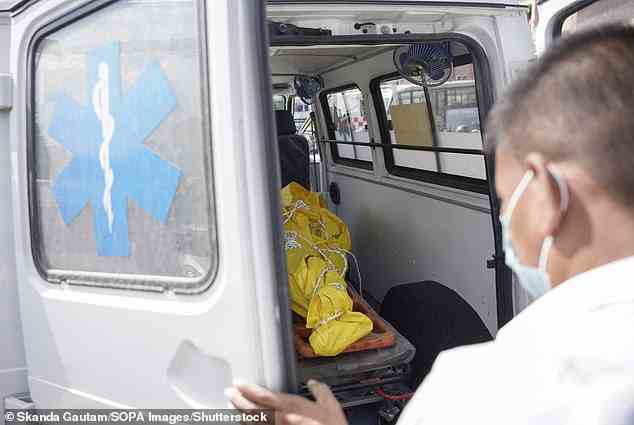
According to Bubb, if someone dies during a flight, crew will do their best to keep it ‘discreet’ and they will ‘not inform’ fellow passengers (stock image)
According to Bubb, it’s possible that someone died during your travel and you never even knew about it – because flight crews do their best to keep it ‘discreet’ if a passenger passes away mid-flight.
‘If a passenger dies, they will be discreetly removed from the plane, and to avoid upsetting other passengers, the flight crew will not inform the passengers that a [fellow] passenger has died,’ he revealed.
A previous report claimed that some aircraft are even equipped with special compartments to keep a body out of sight.
If there is no space, cabin crew are told to cover the person with a blanket up to their neck and tighten their safety belt.
As for medical emergencies, airline crew are all trained in first aid and there are usually defibrillators on board, but if they think a passenger needs more assistance they might stage an emergency landing at the nearest airport.
In addition, they could ask for help from any passengers who may have medical experience.
Are there secret codes that pilots and flight crew use to communicate on planes?

Pilots need to be able to communicate with crew if there’s an emergency without freaking out the passengers – so Shen explained there’s a set of ‘secret words’ used (stock image)
It’s important for the pilots to be able to communicate with flight crew if there’s an emergency without freaking out the passengers – so Shen explained that there’s a set of ‘secret words’ or ‘special call options’ created by each airline.
‘It varies by airline, but all airlines have standard words or codes for communication between flight attendants and pilots using PA systems,’ he said.
‘In the case of emergencies e.g., hijack, flight attendants will notify pilots using secret words or special call options.’
DailyMail.com previously revealed some of the codes used to tell flight control on the ground that there’s been an emergency.
The code 7500 is used if the aircraft is under threat of, or has been, hijacked. If there has been a radio failure, 7600 is used, and 7700 indicates a general emergency.

